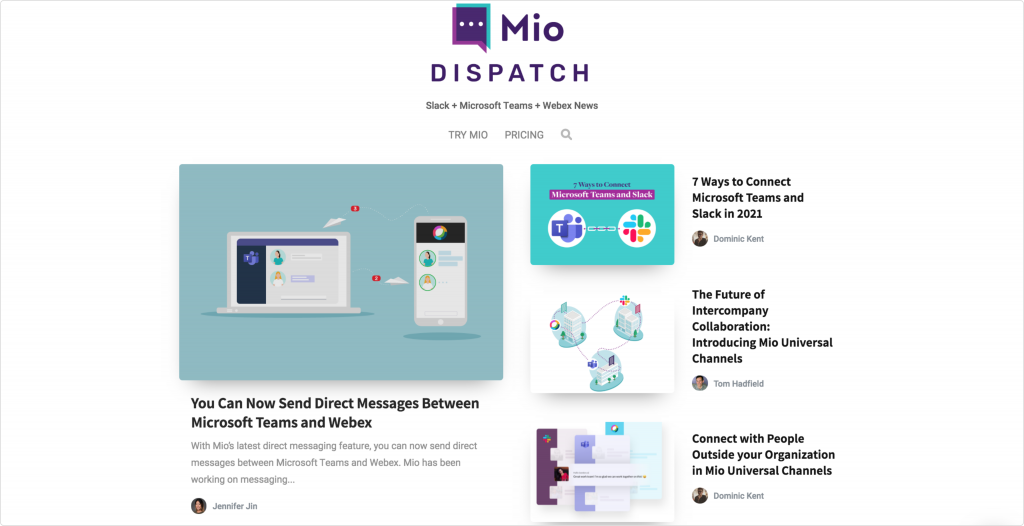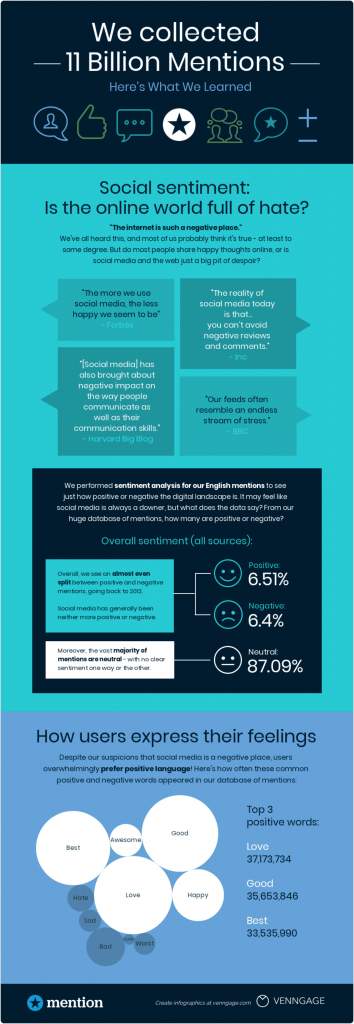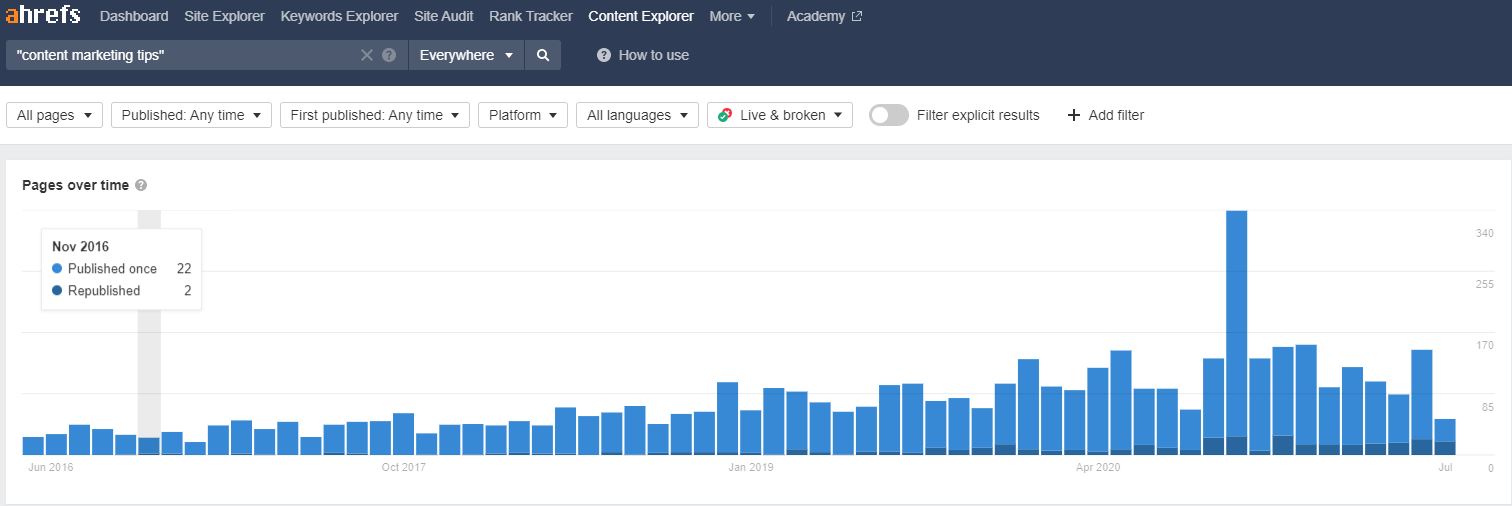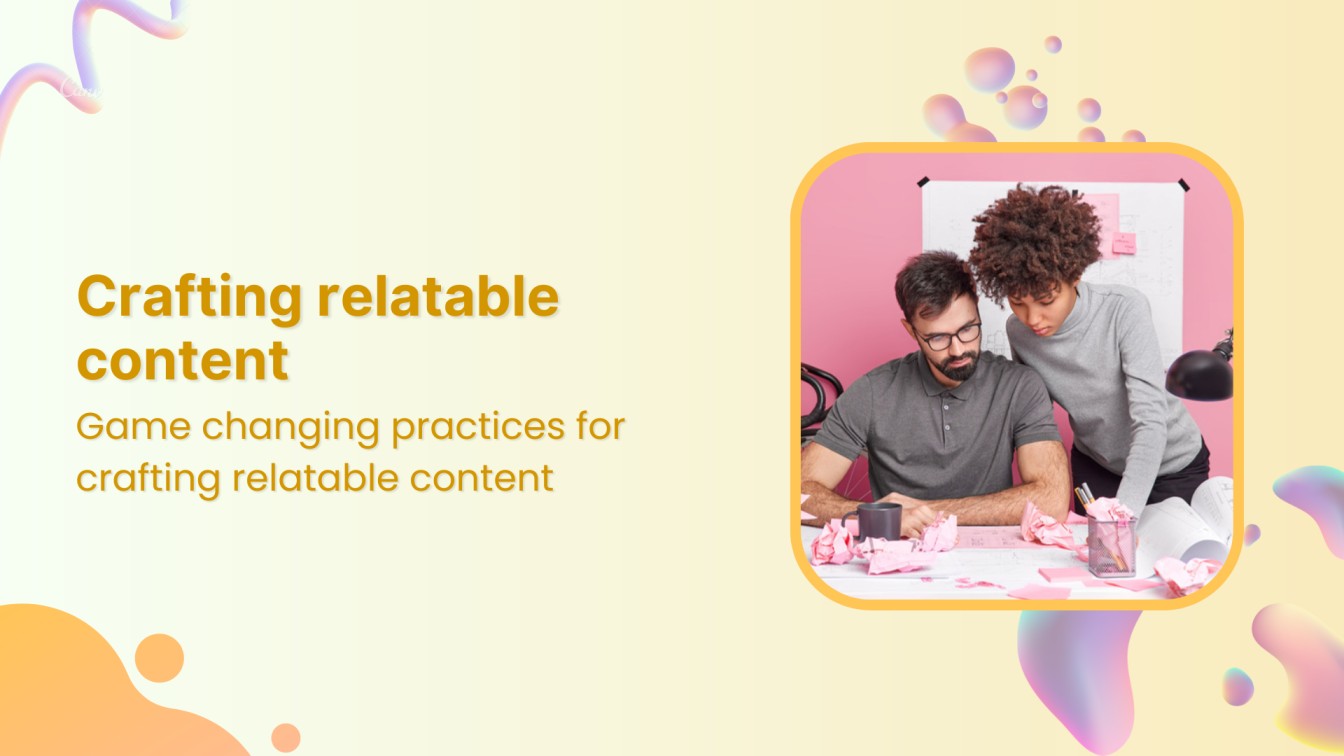Thinking about a low-cost, maximum ROI-based marketing strategy that can help your startup grow? We’ve just the perfect answer for you – packaged as five proven strategies from businesses that were once startups, or those that have been down in the trenches and have emerged successful.
Alongside successful content marketing strategies that have worked for past and present startups, we’ll share takeaways from each strategy. So, you’ll also take home 10 key messages from six content stories today.
Ready? Dig in.
Content Marketing Strategies of Successful Startups [Plus Takeaways]
1. Catalyst’s humor-based approach to content
Catalyst is a customer success platform that’s been getting a lot of engagement on their content including DMs applauding their work according to their team.
To summarize their approach: Catalyst has defined a lively brand personality that leverages memes and humor to engage their audience.
Essentially, Catalyst has tapped into three main content formats:
-
-
- Memes that they post on their social media
- Webinars to educate on customer success
- Blog content and resources
-
The entire content marketing strategy is based on personality-driven, funny content – something that the team says their competitors have tried to emulate but failed since humor isn’t baked into their brand personality.
Look at this meme on Catalyst’s LinkedIn, for example:
Similarly, Catalyst runs a sarcastic, fun publication, The Unicornian that makes fun of the tech trends relevant to their audience.



But how can the team tell what resonates with their intended audience? I asked them and they shared that their content strategy is based on asking their audience with the entire organization funneling topics to the marketing team.
So an approved topic to cover usually comes from a CSM sharing they talked to a customer about so and so and it seemed like a potential topic to cover. Put another way, all the departments collaborate on sharing content ideas. Meaning: the content topics come from customer-facing folks – not just the marketing department.
Speaking of which, the marketing team also pays attention to relevant keywords to target and SEO best practices. However, the focus is more on value, than on chasing keywords for ranking. This makes sense as offering a good content experience is becoming a leading ranking factor.
Takeaways from Catalyst’s content marketing strategy
???? Define a strong brand personality
Settle on what makes you ‘you’ – is it humour or is it wit? Translate your personality into your content from day one so your audience recognizes it in your brand voice or the voice you use to create content. Remember: a strong personality can help you stand out among your competitors and leave a memorable impression.
For more inspiration on brand personality, check out Dollar Shave Club’s personality-based marketing.
???? Source content ideas from customer-facing teams
Be it the sales team or the customer service department, for acing content marketing for startup, ask them to share what your target audience talks to them about – their struggles, pain points, wins, etc. Ensuring all the teams are aligned on content creation helps you create better quality, engaging content that’ll hook your audience since it’s relevant to them. And you can use this data in all forms of content, whether it is a FB post, Instagram Reel, Pinterest Idea Pin, or a virtual event. A personalized approach to your content will be more interactive among your audience.
2. Mio’s SEO-driven content marketing strategy as a startup
Mio, an integration that lets you use Microsoft Teams without leaving Slack, has focused on blogging and search engine optimization to take their weekly blog views from 48 readers to 150,000 weekly blog views.



So how did they do it? Mio’s Director of Content Marketing and Communications, Dominic Kent, details their content journey here, but I’ll share a primer below.
Essentially, the Austin-based startup decided on three chief content formats:
-
-
- Blog posts, as it’s the most popular form of content that appears on the top of any search engine (at the time of writing this).
- Independent research that they offer as gated content with a boatload of value.
- Annual infographics (one or two in a year). However, to ensure these infographics are worth the investment, the team makes sure the infographic’s topic is relevant to their community.
-
Mio’s content strategy is SEO-informed, starting with keyword research to uncover topics to target based on their volume and the likelihood of turning into a high-converting piece. Their approach here: don’t exactly produce blog posts for their customers only, but target the wider audience as well. How? By creating content that covers multiple angles.
To further ensure Mio’s blog is always in the direction set for them, Dominic takes to Google Trends to identify a given topic’s evergreen nature.



What’s more, before working on any topic, the team also themselves: “can we do an excellent job of this?”
Dominic also focuses their content strategy heavily on a few more things:
-
- Content refreshes:
This means they focus on optimizing blog content that gains good traction. Case in point: The 56 Microsoft Teams best features post on the blog originally featured 18 features, was updated to 25 features, and now has 56 features. - Building backlinks:
The brand took two approaches towards content marketing strategy as a startup. These are guest posting on relevant publications, and contributing to HARO queries (journalists’ requests for contributing expert insights to their pieces). - Brand features:
In their content, Dominic features brands that give backlinks and share others’ content with their social media audiences. This improves odds of reaching wider audiences – better brand awareness. ????
- Content refreshes:
Since a good strategy of content marketing for startups is incomplete without a solid distribution plan, I also asked Dominic how they get more eyeballs on the their content. To this end, Dominic suggests startups develop a distribution strategy before producing content. This way, you get a checklist of steps to take to distribute your content.
Since startups don’t have a high authoritative site, to begin with, Dominic also recommends finding distribution avenues outside search engines. For Mio, that was Medium, for example.
Takeaways from Mio’s Content marketing strategy
???? Focus on building backlinks
Your ranking improves as high domain authority sites link to you. Since cold link building might not yield great results, consider writing guests posts, contributing to expert round-ups, and responding to HARO queries with thoughtful responses.
Additionally, be thoughtful in the brand mentions or examples you include in your content. By mentioning a brand that shares content featuring them on their social channels, you can tap into new audiences.
???? Content optimization > content production
Once you have a bunch of content pieces published, revisit them to study their performance. Find out what’s performed well, then refresh the content piece to keep it updated and make it more comprehensive.
As Dominic told me, keep this in mind:
- When your best content performs, make it better
- If your content sucks, make it better
- If your content still sucks, get rid of it (and learn from it)



Analyze, Understand, and Improve Your Social Strategy
Stack your key social metrics against those of your competitors and make targeted steps towards social media success.
14 days free trial - no credit card required3. Venngage’s guest-o-graphics-based content strategy
While Venngage is no longer a startup, one of the approaches they took to grow their content strategy is worth the mention here. In fact, if you are a startup that’s relying heavily on using organic search to drive traffic (and sales, eventually), you’ll find this strategy helpful.
Essentially, guestographics are infographics that you design specifically for guest sites. By doing so, you can build links for hard-to-promote pages or pages that require a specific anchor text linking such as sales pages.
For instance, Venngage partnered with Mention and created an infographic for them with a request to add a line below the infographic that read “Create your own infographics for free with Venngage, the Infographic Maker.” Here, the anchor text ‘the infographic maker’ is linked to their DIY design tool’s page.



Venngage created about 200 infographics like these for guest sites with their target audience that got them about 200,000 organic sessions per month to some of their highest converting pages.
So why did this approach work for the then startup? Three reasons why:
1. Visuals attract
Most people swap text-based guest posts, so guest-o-graphics are a unique and highly engaging approach to building links. Using Ahrefs Content Explorer, the team at Venngage would find out text-heavy listicles that attracted decent traffic and pitch a guest infographic to them.
This meant the target site could increase their traffic by making their content visually appealing and Venngage would get a link.



2. The process is easy to scale
Venngage used its own design tool and ready-to-use templates to create guest infographics. To make the process more efficient and reduce back and forth on edits, they started asking for an outline for the infographic’s copy from the guest site before designing it.
3. Venngage showed what their tool did
Translation: they took the ‘show, don’t tell approach. This meant anybody who learned about their tool via a guest site already got an idea of what the tool can help them create. Therefore, improving the quality of traffic coming their way.
There’s also an added benefit of this backlink-building approach: you can easily build valuable relationships with marketers in your target market. By keeping in touch with the folks you create guest infographics for, you can possibly unlock several other opportunities.
Not to mention, you can enjoy bonus brand visibility if a site you collaborated with shares the infographic with their audience on social media.
Takeaways from Venngage’s content marketing strategy
???? Use guest infographics to build backlinks
So far, we’ve seen there are several approaches to link building. This means if your startup content marketing strategy is SEO-focused, you’ll need to work on building links either by writing guest posts or by creating infographics.
Guest infographics, however, is a unique approach. Target sites featuring your ideal audience are less likely to reject the idea since there’s like work required on their end and they can easily improve traffic to their already ranking content.
And, no – you don’t need to hire a graphic designer for this. Simply get your hands on a design tool that offers free infographic templates and you’re good to go.



Build Trust with Curated Content
Discover, brand, and share the best content with your audience. Establish yourself as an authority and turn leads into loyal customers.
14 days free trial - no credit card required4. KISSmetrics’ Twitter-format approach to content marketing
Success with content isn’t limited to posting on your blog creating content for others. It’s also content that you share on social media – an approach that Hiten Shah, KISSmetrics’ founder, took to grow his web analytics tool in 2008.
Let’s breakdown their content marketing strategy in three simple steps:
Identifying who their target audience was?
To kick off KISSmetrics’ marketing, Hiten and his small team started with understanding who their target audience was. But, instead, of going with their assumption that people like themselves were their target, the team brainstormed and using Google, nailed down their target audience as internet marketers who wanted clarity on their web metrics.
Figuring out where the target audience hanged out
With that out of the way, the team started to figure out where their audience hanged out and which marketing channel they could use to reach out to them. Their goal? Engage with their audience by providing free value.
Now, this was only possible if they could find a marketing channel where their target audience was active, but they could get the most ROI. In other words, they were looking to invest in a platform with minimal investment and maximum results – a platform that was easy to scale and costed less. The answer? Twitter.
Content marketing (or, rather curating) with Twitter
At that time, Twitter hashtags were new and gaining popularity. KISSmetrics’ audience was also active on the platform and the investment was minimal – free sign up, free to use hashtags. For the content that they tweeted, you ask? The team started using content curation (they didn’t have a blog at that time) that involved sharing others marketers’ content (with credit to them, of course).
The results? Within a year, KISSmetrics’ traffic grew to over 500,000 unique monthly visitors. Their customer lifetime value (CLV) was high and customer acquisition cost was low. Bingo!
Takeaways from KISSmetrics Content marketing strategy
???? Be sure of who your ideal buyer is
For any content marketing strategy to be a success, the first step is to understand exactly who your target audience is, what they struggle with, and where they hang out. Having the exact answer to this can help you plan a content strategy that resonates with them and engages them.
???? Offer free value without any expectations
That’s the exact approach that Hiten took when living the startup life. You can provide free value in whatever format your target audience prefers to consume – be it tweets, LinkedIn articles, Loom tutorials, YouTube videos, webinars, or even newsletters.
Once you know your audience’s struggles and pain points, you can also tell what topics will attract them so you can provide value on those topics. If you can, try to talk to people who fall into your ideal audience’s profile and ask them what content topics they’d like to consume (including the format and marketing channel they prefer).
???? Pair free value with social media
Social media or a marketing social channel where your audience spends their time on, gives you a channel to:
-
-
-
- Increase brand awareness
- Connect and engage with your ideal buyers
- Distribute content you are creating
-
-
If, like KISSmetrics, you aren’t prioritizing creating content like webinars or blog posts, consider taking the following two approaches:
????Create social media content
Start by creating a social media content strategy – identify pillar topics you’ll create content on, decide the content formats you’ll explore, settle on a publishing frequency, and start drafting.
The more you post on social media and the more you engage with your target buyers, the better you can tell what type and topics of content they like to consume.
Want a fresh example of another smart cookie leveraging social media to build an audience and grow their tool? Look up Jay Desai, Founder of Swpely, on LinkedIn.
I’m not hiring for Swpely yet, but I’m already thinking about how I want to grow out our team
Here are the 1st hires I want to make as we scale (in order):
– Product-Growth Marketer
– UX/UI Designer (part-time)
– Head of Engineering
– SM Marketer
– Customer Success RepWhy????
— Jay Desai (@JayAtSwpely) May 5, 2021
????Curate relevant content
This comes in various shapes and sizes. Here’s a complete guide to content curation. Quick summary: you curate or source content that’ll interest your target audience and serve it to them.
For Kissmetrics, this content was content from other marketers. But there are tons of ways to get creative with content curation. For example, you can create curated Twitter threads like this one:
Here are the best threads I’ve ever read on Twitter.
A collection on:
– Marketing
– Life & purpose
– Startups
– Entrepreneurship
– PassionI’ll be adding to this list as I discover more from amazing creators I see on this app every day.
You need to read these ASAP ????
— Jeremy Moser (@jmoserr) February 11, 2021
In fact, you can also do Twitter thread-based case studies to provide free value and engage your audience.
Great marketers steal.
If there is any brand you should steal email marketing tactics from — it’s Airbnb.
They use it to perfection to acquire users and retain them.
Steal these 7 emails ???? pic.twitter.com/v5216AUssD
— Alex Garcia ???? (@alexgarcia_atx) April 17, 2021
With all this though, always have a plan to engage your audience on social. Remember: it’s not about hitting publish, it’s about interacting with your followers, having conversations with them, and building strong relationships.
5. Mint’s blogging-centered content strategy
Speaking of free value, Mint, a personal finance software used the approach to grow 20,000 subscribers even before they launched their app. In three years, Intuit purchased Mint for $170 million. At that time, Mint had 1 million users with thousands of new users joining every day. Four years down the line, Mint had over 10 million users.
Impressive, isn’t it? So how did content fuel Mint’s growth?
With the help of consistent blogging (read: providing free value to help their audience navigate their finances). But, that was easier said than done since Mint’s competitors had the finance to build huge publications.
Here’s the roadmap Mint took though:
The MintLife blog
They started with creating a blog, MintLife, separate from their product with one focus: helps their target audience manage their finances. Keep in mind that regular blogging wasn’t big back in 2007. But the small team behind the startup settled on consistency as their second pillar for blogging after providing free value that’s relevant to their audience.



Creating and distributing content
The question now is: how did Mint continue to push quality content on a tight budget? They invited finance bloggers to guest write for them. Plus, they sponsored other finance blogs.
As for distribution: the team grew a strong presence on sites like Reddit and Digg. They also engaged their audience by creating shareable content such as the Trainwreck Tuesday, a series that covered interviews featuring personal finance habits and personal finance disaster stories – often crowdsourced.
All these efforts got Mint 20,000 subscribers. In fact, at the time of their product release, MintLife was getting more traffic than their competitors’ entire sites.
Generating more demand
The startup was able to build such demand that their system couldn’t manage all email subscribers signing up to try the beta version initially.
So the team got creative and watered the buzz by asking interested readers who wanted early access to post a badge on their blog or social media profile called “I want Mint.” This helped improve Mint’s search rankings further while generating more demand.



Discover Relevant, Trending And Engaging Content
Monitor content by keywords, topics or sources of your interest. Curate content that drives engagement on all of your channels.
14 days free trial - no credit card requiredTakeaways from Mint’s Content marketing strategy
???? Build an audience online
Whether you’re a startup founder or a creator, the right content can help you build a strong community if you’re proactive in building relationships and offering free value. Since it’s not easy to distribute content, leverage social media platforms and Q&A platforms to build your presence, connect with your ideal audience, and distribute content. The approach takes time and patience, but it’s definitely worth it.
???? Tell stories
Did you see how Mint featured finance disaster stories and stories on the personal finance habits of industry-prominent people? That’s storytelling at its best and a content strategy revolving around it can help you too. Think interviews with people your audience looks up to, case studies or success stories, and even audio chats or interviews with industry-famous folks (hello Twitter Spaces – provided that’s where your audience is!).
What’s your takeaway from these content marketing success stories?
Here’s hoping these five content marketing strategies from current and past startups have left you buzzing with ideas to shape your own content strategy to fuel growth.
Content marketing strategy for startups: A quick recap
Collective marketing strategies that have worked for startups:
-
-
-
- Strong brand personality
- Identify target audience
- Figuring out where the target audience hangs out
- Be sure of your ideal buyer
- Source content ideas from customer-facing teams
- Content refresh
- Wise backlink strategy
- Brand features
- Content production and optimization
- Use Guest Infographics for backlinks
- Content marketing (curating content ) with Twitter
- Offer free value without expectations
- Pair free value with social media
- Effective content distribution
- Generating more demand
- Build online audience
- Tell your story
-
-
Know other success stories?
Share them with us in the comments.
Masooma Memon
Masooma Memon is a pizza-loving freelance writer by day and a novel nerd by night. She crafts research-backed blog posts and articles for small businesses and app companies who aim to employ quality content to educate and engage with their audience.






